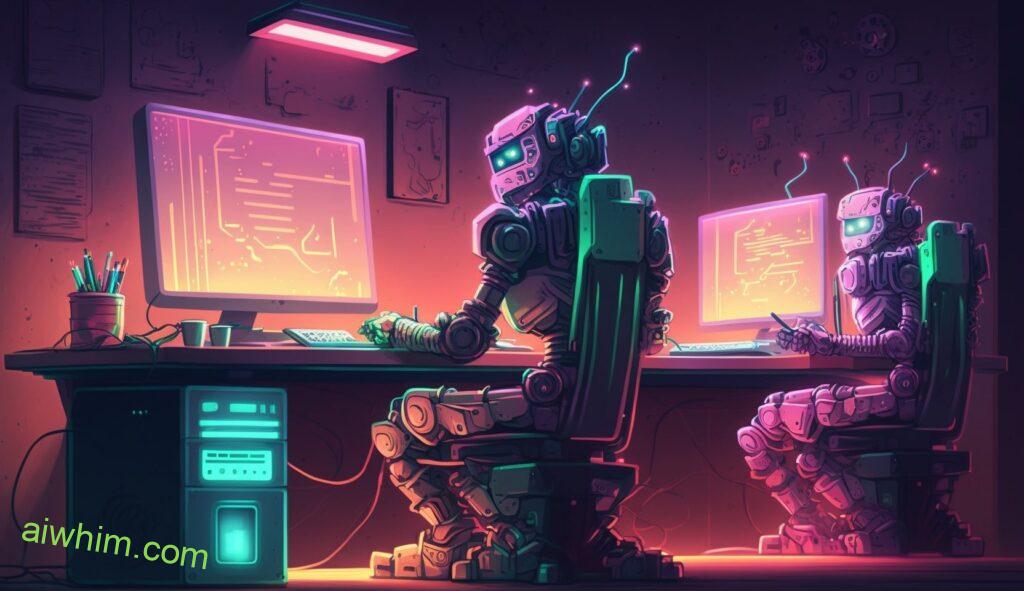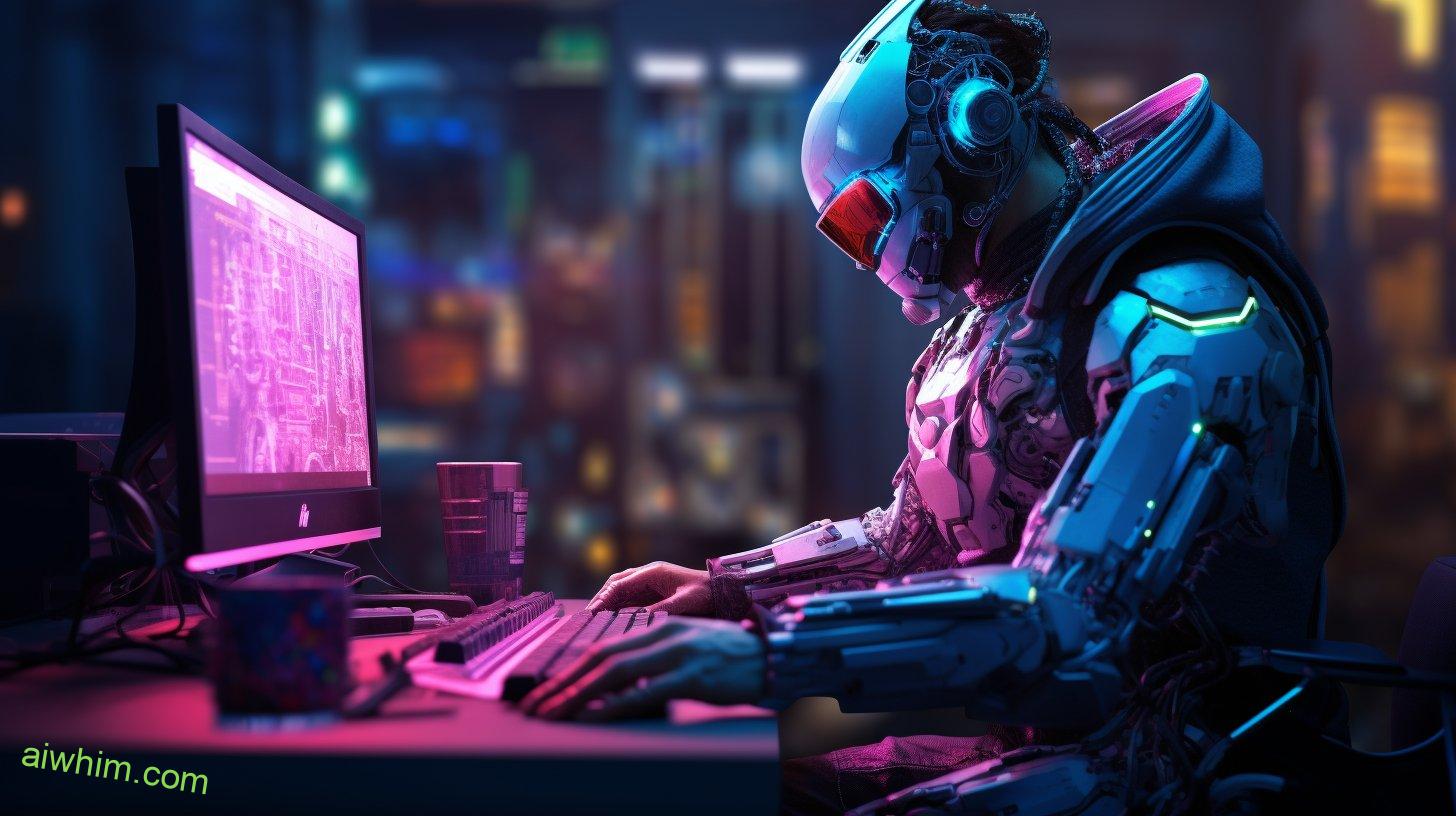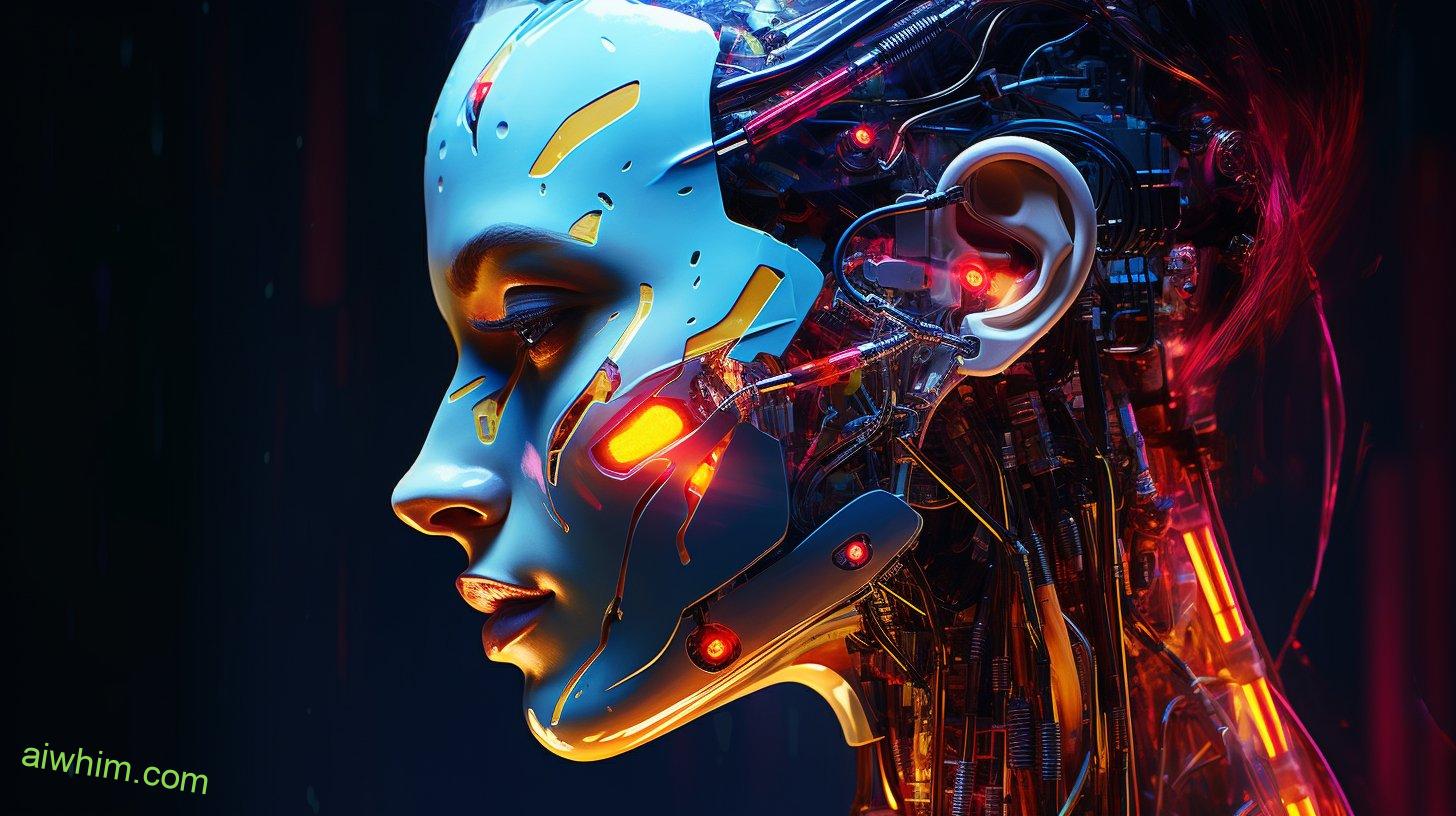We live in a world that is rapidly changing, with technology advancing more and more every day. This means new jobs are created and some old ones become obsolete. One of these old occupations could be that of a medical transcriptionist. We have to ask ourselves: Is there a risk that chatbots and artificial intelligence (AI) will replace your job as a medical transcriptionist?
This article seeks to answer this question from multiple perspectives. We’ll look at how different scenarios can play out if AI takes over the role of medical transcriptionists, what implications it could have for those who currently do the job, and what the future holds for this profession. Finally, we’ll explore potential alternatives for workers affected by automation in this field.
The use of machines such as chatbots and AI can be both beneficial and detrimental depending on how they’re implemented; however, when considering their effects on human labor like medical transcriptionists, it’s important to weigh all factors carefully before making any decisions or predictions about its future. By understanding all angles of this issue, we can come up with solutions that ensure everyone involved gets what they need while taking away any unnecessary risks.
By the way, are medical transcriptionists among the jobs on the list of 100 most likely to be replaced by AI? Click to find out.
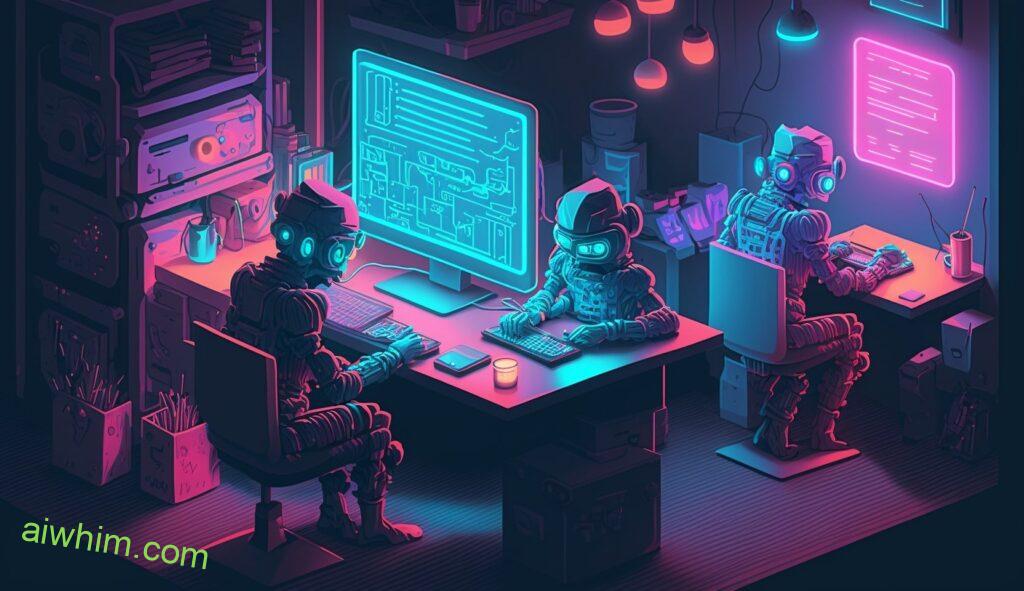
Definition Of Chatbots And AI
Chatbots are computer programs designed to simulate conversations with humans through text or audio messages. They use natural language processing (NLP) to understand user input and respond accordingly. Chatbots can be used for customer service tasks such as answering FAQs, providing product information, and engaging customers in conversation.
AI stands for Artificial Intelligence which refers to machines that can learn from experience and perform complex tasks such as decision-making, image recognition, problem solving, etc. It uses technologies like machine learning and deep learning algorithms to process data at scale and make decisions based on it. AI has many applications including robotics, healthcare, finance, retail, marketing automation, transportation systems etc. In essence, these technologies allow computers to think like humans but more efficiently than us!

Additionally, you might find it useful to read this article on the impact of AI on medical coding careers. (Click to read.)
Potential For Automation In Medical Transcription
The potential for automation in medical transcription is a growing concern among medical transcriptionists. With the advancements of chatbots and AI, there are fears that these technologies could eventually replace human labor. While some automated transcription technology has been used to streamline the process, it cannot yet completely replace a trained professional’s accuracy or speed.
Medical transcription robots, while still at an early stage, have shown promising results when used with proper support from humans. Automated transcription software can help reduce errors caused by manual typing and improve turnaround times. However, this technology requires special programming and training before being put into use. Additionally, as more data is collected through digital health devices like Fitbits and Apple Watches, natural language processing systems may be able to make sense of complex healthcare terminology without needing any type of manual input from a medical professional.
Overall, increased automation in medical transcription will require careful consideration and oversight to ensure patient safety is not compromised due to inaccuracies in transcripts created by machines instead of humans. Although advances in technology present both opportunities and risks for those working in the field of medical transcription, ultimately it’s up to the individual provider whether they choose to embrace new options or stay true to traditional methods.
Furthermore, we recommend checking out this article that discusses how AI is affecting nursing jobs. (Click to read.)
Pros And Cons Of Automation In Medical Transcription
The automation of medical transcription is a double-edged sword, and the pros and cons must be weighed carefully. On one hand, there are clear benefits associated with using AI to automate this process. For instance, it could reduce costs for healthcare facilities while allowing them to become more efficient in their operations. Additionally, chatbots powered by AI can provide quick responses to patients’ inquiries, helping to free up time for medical staff.
On the other hand, automated systems may come at the expense of human jobs—especially those that involve repetitive or manual tasks like data entry or transcription services. This could be a real risk for medical transcriptionists who rely on these positions for their livelihoods. Automation also carries its own risks: if something goes wrong with an automated system, it could result in costly errors or inaccuracies that would require the intervention of a trained professional to rectify.
Weighing all factors carefully reveals both opportunities and challenges associated with automation within the realm of medical transcription. Ultimately, careful consideration should be given when deciding whether or not to implement such systems; doing so without due diligence could lead to unintended consequences down the line.
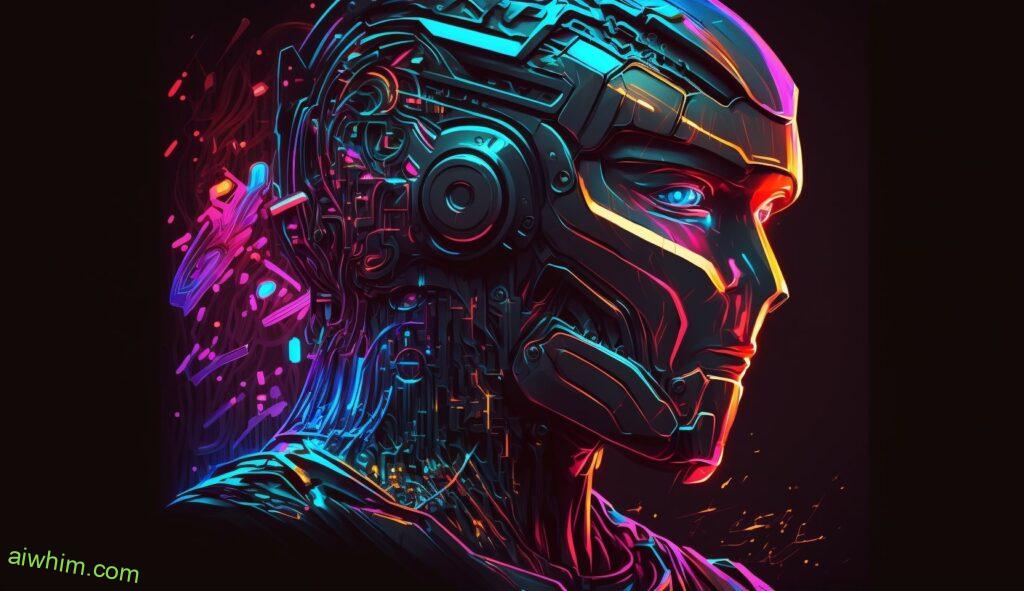
Changes To Workforce Requirements
It is true that chatbots and AI technology are changing the way we work. The workforce demand for automation skills is increasing, as more jobs become automated. However, it is unlikely that medical transcriptionists will be replaced in the near future due to its complexity and specialized nature. While job automation can reduce workloads, improve efficiency, and increase productivity – worker safety must also be taken into consideration when looking at changes to job requirements. Automation should not come at the expense of workers’ rights or health; physical tasks like data entry may still require a human touch.
In this day and age, there are few guarantees in any industry but one thing remains certain: technology must always serve people rather than replace them. As such, while new technologies can offer improved services with greater convenience, they must never take precedence over ensuring safe working conditions for all employees involved.
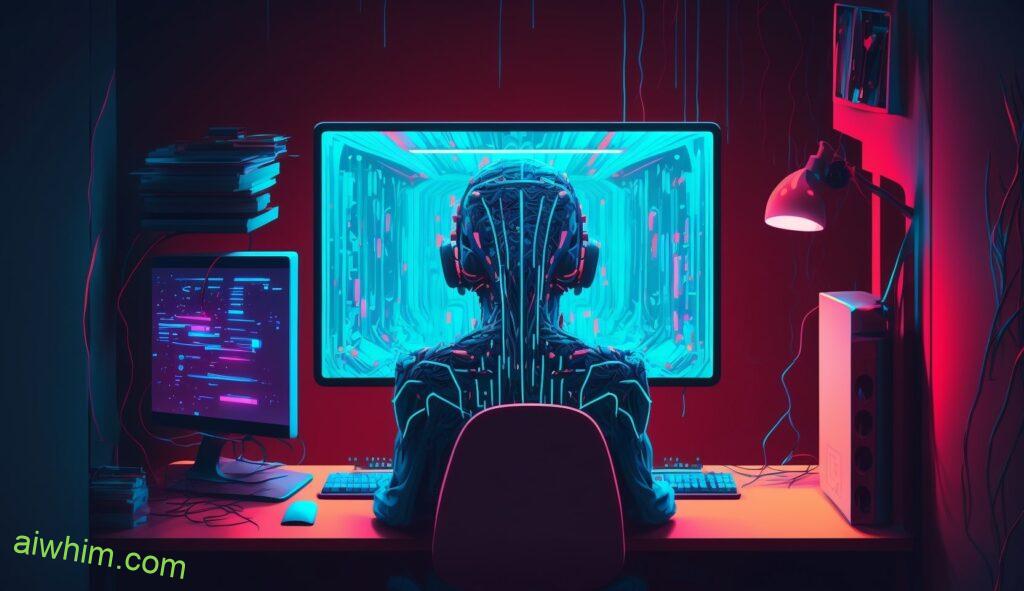
Impact On Job Security For Medical Transcriptionists
The digital revolution has had a profound effect on workforce requirements and in the medical field, chatbots and AI have been utilized to automate certain processes. The impact of this automation on job security for medical transcriptionists is an important topic to consider.
When it comes to medical transcription, chatbot automation could dramatically reduce or potentially eliminate the need for manual labor. As more hospitals switch over from analog systems to automated ones, there may be few opportunities left for human transcriptionists. This shift creates uncertainty over how secure their jobs will be in the future. Moreover, with the rise of AI technology, many tasks that used to require humans are now being handled by machines instead. Although some healthcare professionals still prefer a human touch when handling sensitive information, many organizations are beginning to see the benefits of automating routine tasks such as data entry and transcription services.
It appears that while there may be some risk associated with advances in automation technologies like chatbots and AI, there are also potential opportunities for skilled workers who can provide specialized services that robots cannot yet perform. Therefore, if medical transcriptionists want to remain competitive they must stay informed about industry changes and find ways to leverage their skillset into higher-level roles where they can thrive despite increased reliance on automation within the sector.

Alternatives To Human Transcriptionists
The potential of AI and chatbots to replace human transcriptionists is a real concern for many. However, there are existing alternatives that can help bridge the gap between traditional methods of medical transcription and an automated system.
One such alternative is voice recognition software which allows physicians to dictate their notes into a computer or phone instead of typing them out manually. This eliminates the need for manual input from transcriptionists while still capturing important information accurately. Additionally, digital dictation systems provide an efficient way to store patient records securely and make them easily accessible when needed. Finally, automated transcription services use speech recognition technology to quickly transcribe spoken audio recordings into text documents with minimal effort required by the user.
These technologies present new opportunities for healthcare professionals who want to reduce costs without sacrificing accuracy or accessibility. By leveraging these tools, healthcare providers can experience increased efficiency in data entry while reducing labor costs associated with employing full-time transcriptionists. Furthermore, they offer greater flexibility as doctors are no longer tied down to one particular type of device since most platforms support multiple devices and operating systems. With this freedom comes the ability to access patient records anytime, anywhere – providing more control over how care is delivered and potentially improving outcomes in the long run.
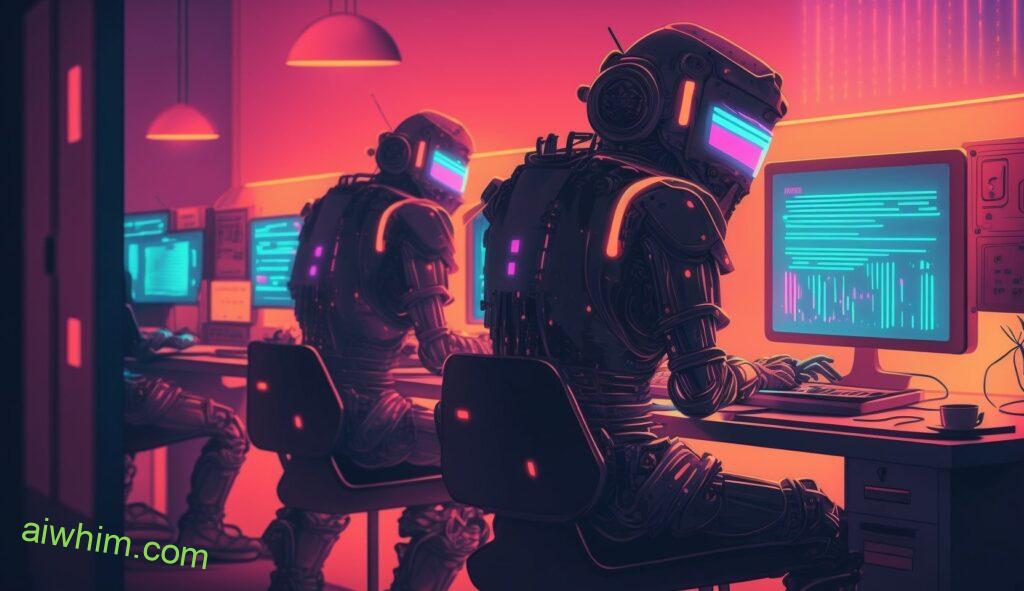
Challenges Faced By Automation For Medical Transcriptionists
The emergence of chatbots and AI technology has certainly caught the attention of medical transcriptionists, leaving many to wonder if their jobs are at risk. While automation can be beneficial in some cases, it also presents a variety of challenges that must be addressed before any substantial transition away from human transcriptionists is possible.
One issue with automating the transcription process is data security. As machine learning algorithms become increasingly sophisticated, there is an increased risk for cyberattacks or other malicious activities aimed at stealing confidential patient information. This could lead to serious legal ramifications for healthcare organizations and providers.
Another challenge facing automated transcription services is accuracy. Although modern technologies such as natural language processing have made significant strides in this area, they still cannot match the level of accuracy provided by trained professionals who understand both clinical terminology and regional dialects. In addition, job displacement remains a real concern—many people rely on income generated by transcription work and may not have the resources to pursue new options should automation take over their current roles.
Considering these obstacles, it seems unlikely that machines will replace human transcriptionists anytime soon. Automation may eventually provide cost savings and improved efficiency but only after addressing fundamental issues related to data security and accuracy first.

The Role Of Artificial Intelligence
As technology advances and the world of work shifts, many people are wondering what will happen to their jobs. For those in the medical transcription field, one question that looms large is: “Is there a risk that chatbots and AI will replace my job?” The answer isn’t a simple yes or no – it depends on how artificial intelligence (AI) applications evolve over time and how they intersect with current practices.
The potential for AI-driven automation in medical transcription is high due to its ability to leverage machine learning, natural language processing and data analysis tools. With these capabilities, computers can read patient records and convert them into accurate digital transcripts faster than humans ever could. But this doesn’t necessarily mean that human medical transcriptionists will be replaced by machines anytime soon. Here’s why:
- AI still needs human input when it comes to complex tasks like recognizing nuances in speech patterns or understanding regional dialects.
- There are certain quality control standards that need to be met before an AI system can be used which require significant resources from organizations looking to implement it.
- Human medical transcriptionists have experience working within healthcare systems, making them better equipped to handle any unexpected changes during the patient care process.
Though AI has opened up new possibilities for streamlining processes within the healthcare industry, it is unlikely that robots will completely take over the role of medical transcriptionist anytime soon. In fact, skilled professionals may find themselves more valuable as translators between computers and clinicians in order to bridge any gaps between technological capability and medical knowledge. Ultimately, while AI technologies play an increasingly important role in today’s workforce, they don’t have to spell doom for existing professions – instead they provide us with new opportunities for growth.
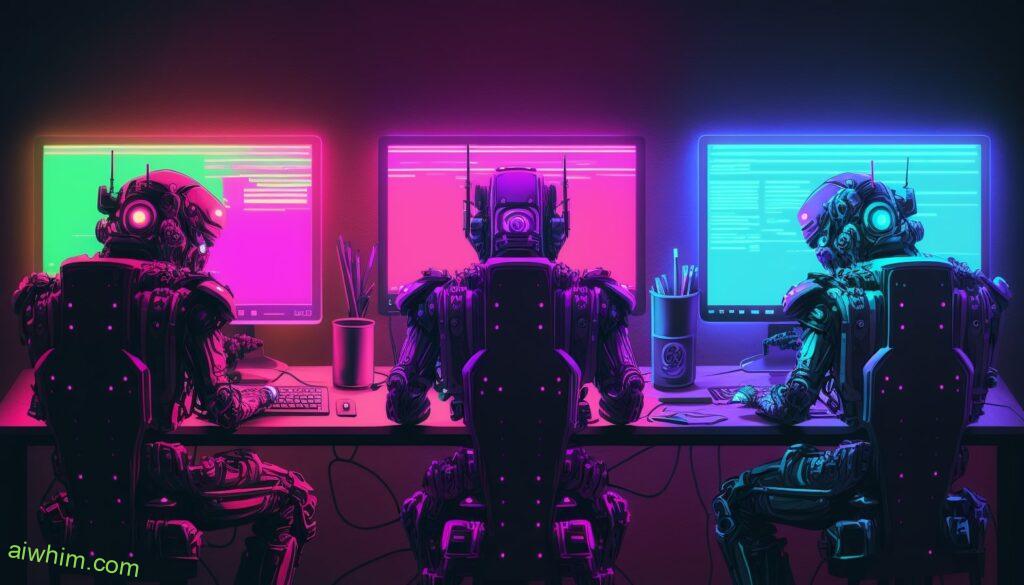
Benefits Of Artificial Intelligence (AI)
The potential benefits of artificial intelligence are far-reaching. AI, specifically machine learning and natural language processing technologies, have the ability to automate tedious processes like transcription and data analysis in a fraction of the time it would take humans to do the same tasks. Automated transcription can quickly convert verbal conversations into digital text with accuracy that rivals human transcriptionists. Clinical data analysis is also improved through automated algorithms which allow for rapid data mining and interpretation.
Moreover, AI has been used to help medical professionals make more informed decisions based on patient history or real-time results. For instance, AI tools can support doctors by alerting them when they detect an abnormal pattern or risk factor in a patient’s test result or medical records. By leveraging technology such as machine learning, healthcare professionals can diagnose ailments faster without requiring manual labor from a transcriptionist.
While it may seem concerning that AI could potentially replace some jobs traditionally held by humans, its implementation into the healthcare industry will likely improve patients’ lives while allowing medical professionals to focus on providing quality care rather than manually conducting mundane tasks.
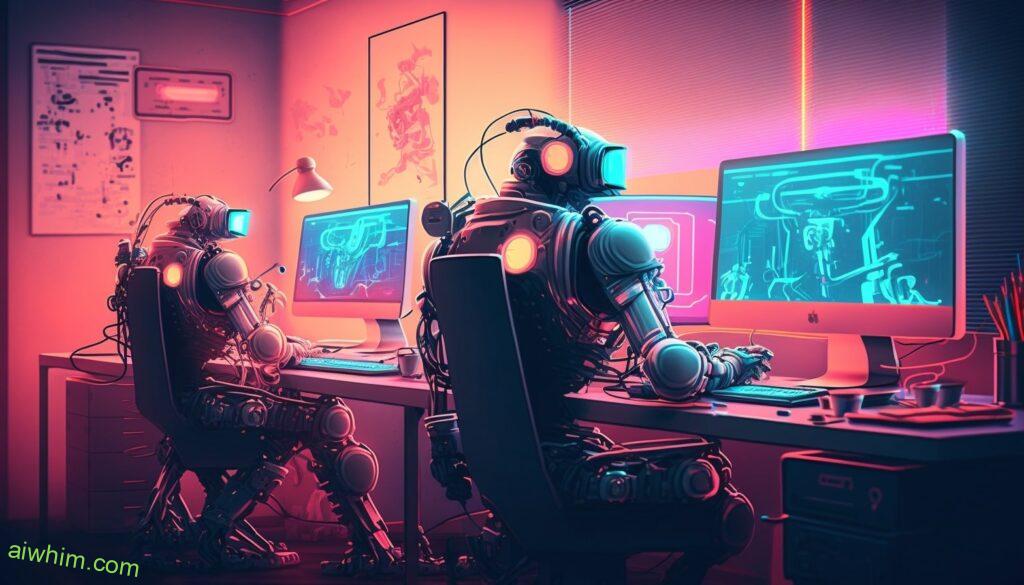
Assessing Accuracy And Reliability
Accuracy testing involves using precision-based measures such as cross checking records with existing documents or double entry methods. Reliability assessment looks at consistency between multiple users over time and can be done by comparing results from different testers. Both types of tests measure performance against established standards and help us identify potential problems before they become serious issues. Accuracy measurements help detect small errors which could have large impacts on patient care if left unchecked.
It’s clear that chatbots and AI need to undergo extensive evaluation processes before being implemented in any healthcare setting. As these technologies continue to evolve, humans will always play an integral role in ensuring accurate and reliable medical transcription services. Human oversight will remain essential in guaranteeing the highest level of safety, privacy, and ethicality when dealing with sensitive data in the field of medicine.
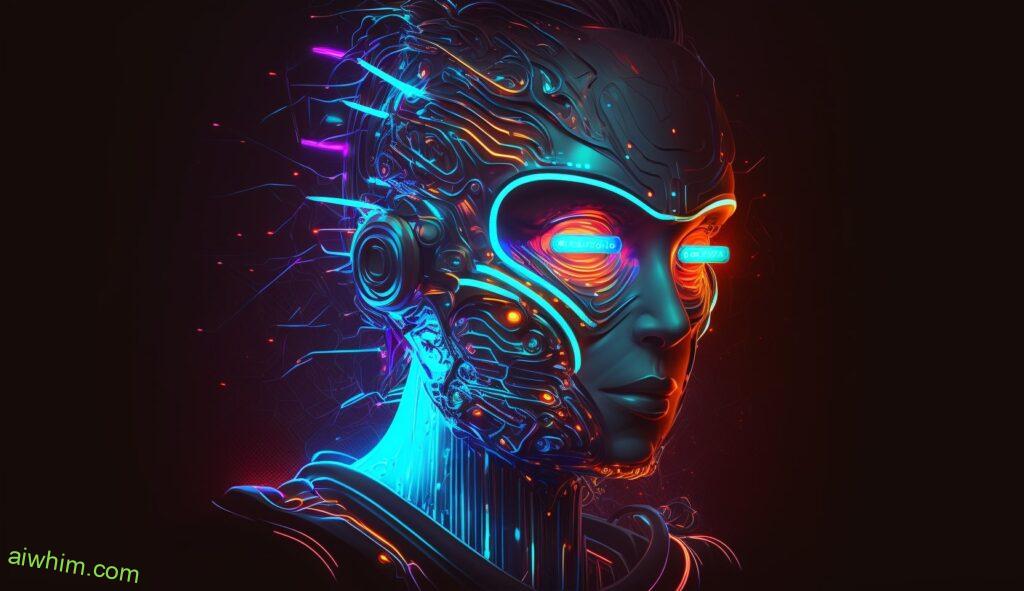
Cost Comparison
The cost comparison between human medical transcriptionists and chatbots/AI is an important consideration when evaluating the potential risks of job replacement. A comprehensive cost analysis must take into account both automation costs associated with AI as well as human costs related to traditional medical transcriptionists. Here are some key points about the cost comparison:
- Automation costs for ai can be expensive upfront, but may provide long-term savings on labor expenses
- Human costs include salary and benefits for trained professionals
- Cost analysis should consider any additional software or hardware required to run a successful chatbot system
- AI cost assessment needs to factor in training time, setup fees, maintenance fees, etc.
- Both options require investments of resources; each has its own unique pros and cons that need to be weighed carefully when making decisions.
Overall, while it is impossible to definitively answer whether there is a risk that chatbots and AI will replace your job as a medical transcriptionist without further research and evaluation, it’s clear that careful thought must go into analyzing the various factors involved including the cost comparison between both options. It’s essential to weigh all elements before deciding which route best suits your organization’s goals and objectives.
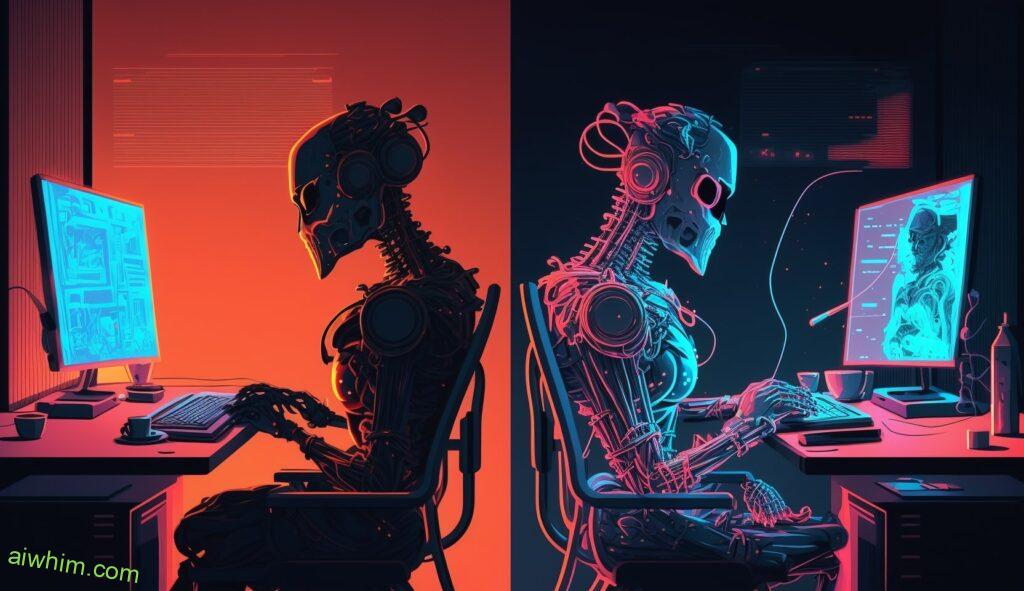
Ethical Considerations
The ethical implications of chatbots and artificial intelligence (AI) replacing medical transcriptionists are vast and complex. As the technology advances, there is a need to establish privacy protocols for machine learning algorithms that use health data. Without proper protocols in place, sensitive patient information could be misused or exposed to unauthorized persons. Additionally, human bias can inadvertently be encoded into AI algorithms which can cause significant consequences when applied to large datasets such as those used in healthcare. This raises further questions about accuracy and reliability of automated decisions based on such biased data sources.
Moreover, it’s important to consider how automation will affect job displacement and employment opportunities within the industry. Will workers have access to retraining programs if their jobs become obsolete? How will policy makers respond to this type of disruption? It’s clear that these questions must be answered before any form of AI-driven decision making is adopted by medical institutions. The answers to them will determine whether the benefits outweigh the potential risks associated with using chatbots and AI systems in medicine.
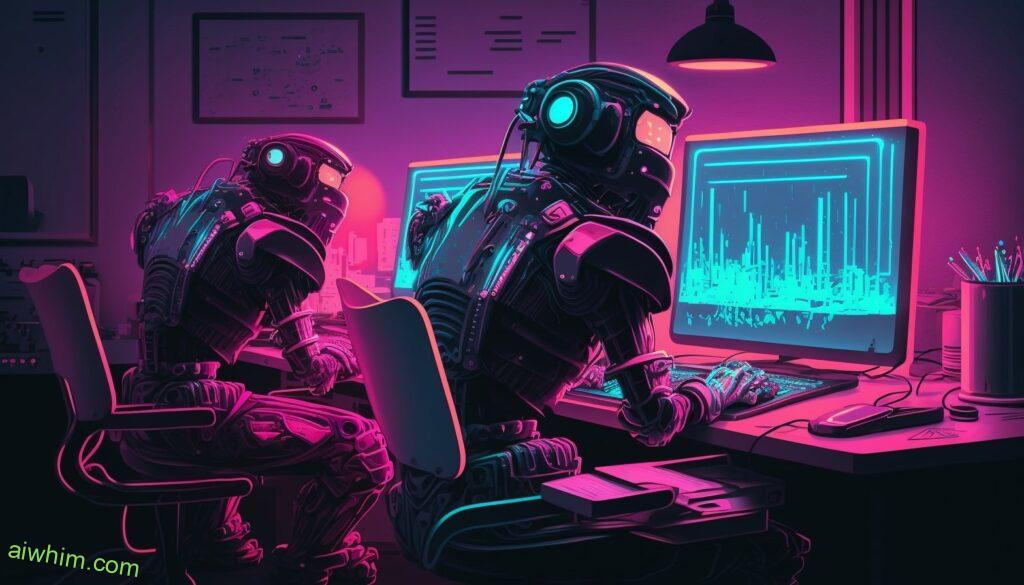
Regulations And Standards
As the world of healthcare advances, so too does its need for regulations and standards. Like a life preserver thrown into an ocean of uncertainty, these rules provide a safe harbor in which to navigate new technologies such as chatbots and AI. Yet it also poses a question: will this newfound freedom put medical transcriptionists out of work? To answer this, it’s important to examine how regulations and standards are applied in the healthcare industry.
The compliance landscape is constantly shifting – from laws that dictate who can access patient records to ethical guidelines on how information should be used. These regulations often prevent healthcare organizations from implementing emerging technology without certain qualifications or safeguards being met beforehand. Thus, while some jobs may become automated by chatbots and AI, there are still many areas where medical transcriptionists remain invaluable due to their knowledge and understanding of these regulatory requirements.
In light of this, medical transcriptionists must stay abreast with the latest legal developments within their field. By keeping up-to-date on available resources like coding manuals and clinical research databases, they can continue to play an essential role in meeting the ever-changing needs of patients in today’s digital age.
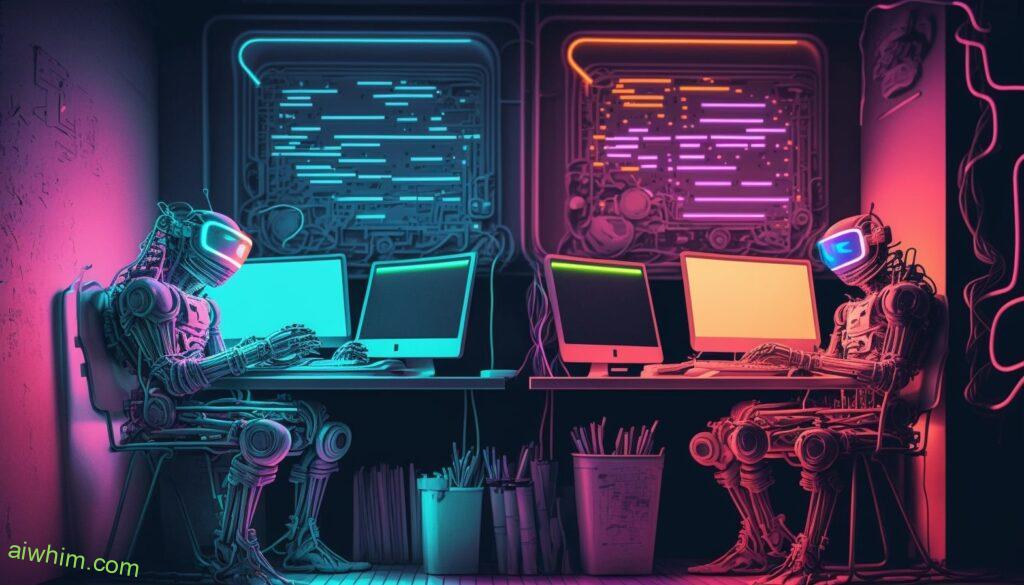
Training For New Technologies
The emergence of chatbots and AI has raised the concern that jobs in medical transcription may be replaced. However, there are still many opportunities available for those who have the appropriate training to work with these new technologies. The key is for medical transcriptionists to become familiar with machine learning, human-machine interaction, data analysis, digital literacy and medical informatics.
By having a basic understanding of how these technologies work together and interact with each other, it will help medical transcriptionists meet the changing demands of their job roles. This knowledge can also provide them with an edge when applying for positions in this field or looking to advance their career prospects within it. With the right education and experience, they can remain competitive in a rapidly evolving industry while helping healthcare professionals stay up to date on current trends and breakthroughs in technology.
Ultimately, embracing change through continuing education allows for leveraging advances in technology rather than fearing them; opening paths towards greater autonomy, opportunity and freedom – both personally as well as professionally.
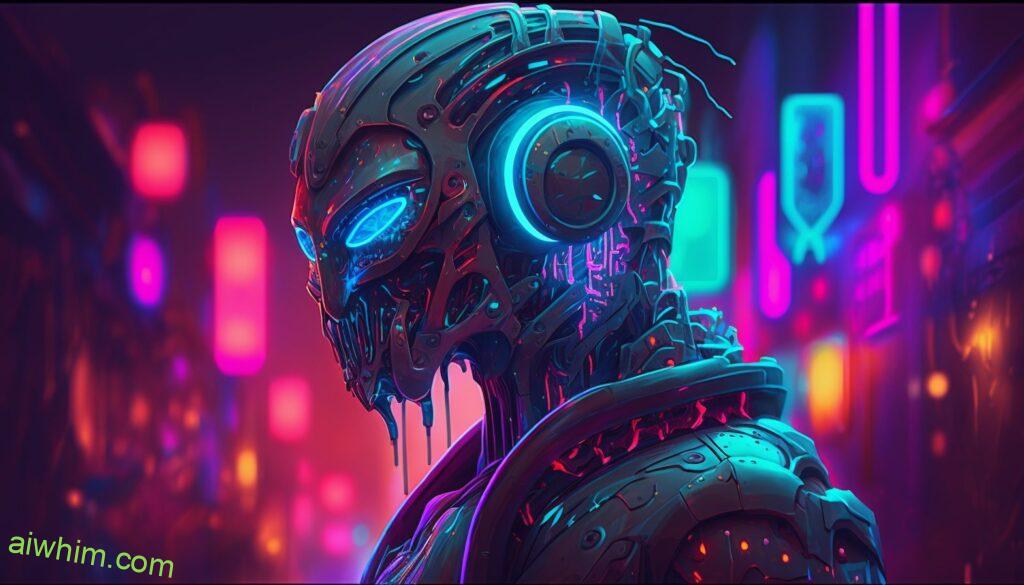
Future Outlook For Medical Transcriptionists
Recent reports suggest a potential rise in automation and machine learning tools being used to replace traditional human labor across many sectors, including medical transcriptionists.
The implications are both exciting and concerning:
- Exciting because it could enable more accurate data analysis and enhanced security measures;
- Concerning as it may lead to job losses for those who cannot keep up with the rate of technological advancement or lack access to required training opportunities.
Despite these concerns, there is also hope for medical transcriptionists who are willing to innovate and develop their skillset. For example, by leveraging industry knowledge combined with new technologies such as AI and machine learning, they can create new roles within their field which will remain relevant even if automated systems become commonplace. With this approach, jobs might become less about manual entry but still require a person’s expertise – ensuring medical transcriptionists remain indispensable members of any healthcare team.

Final Words
As we consider the implications of automation on medical transcription jobs, it’s clear that there are both pros and cons to be weighed. On one hand, automated solutions can offer a more accurate and reliable product than human transcriptionists in certain cases. However, these systems need to adhere to strict regulations and standards if they’re going to be trusted by doctors and other healthcare professionals. Additionally, while automation may reduce costs in some areas, it could eliminate jobs for those who rely on them as their main source of income.
The potential threat of chatbots and AI replacing human transcribers is like an encroaching shadow – always lurking but never quite reaching its destination. The reality is that these technologies have the potential to revolutionize the medical field; however, this should not come at the cost of people’s livelihoods or patient safety. As such, companies must take into account all factors before implementing any form of automated technology when dealing with sensitive medical information.
Ultimately, while artificial intelligence has a part to play in streamlining processes within the medical field, I believe that humans will always remain irreplaceable components when it comes to accuracy and reliability. Like two sides of a coin, AI-based solutions have advantages which cannot be ignored; however, equally important are considerations about humane treatment for workers who would otherwise lose their job due to automation.
Author: Ole Paulson
Author Bio: I’m Ole and on this website, I share everything there is to know about Artificial Intelligence, and useful tips for using AI to our advantage. I have a background in data science and research and have been following the AI-space for years. You can read more about me in the “About” page.

